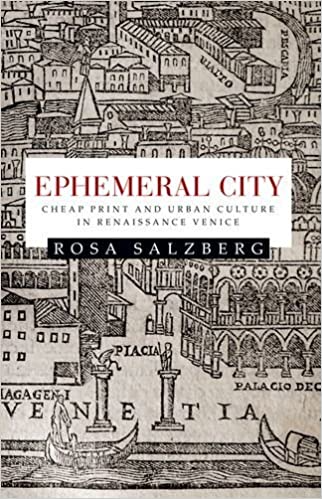
Staff Pick: Ephemeral City: Cheap Print and Urban Culture in Renaissance Venice
When we think about the introduction of print, we immediately think of the beginning of the Renaissance, the rebirth of classical culture after the so-called (and wrongly so) Middle Ages. However, such a way of thinking entails the risk of idealizing what tradition has taught us about that period. The introduction of the mechanical reproduction of written text not only allowed for the dissemination of high culture but also created the conditions for the creation of what we know as popular culture.
From the end of the fourteenth century onwards, Venice became one of the epicenters of the development of printing, the technological innovation that shaped a new way of thinking as well as the production of writing.

Trailblazing a new way of analyzing the history of print, Rosa Salzberg focuses on the possibilities that the new technology brought for the dissemination of culture at the street level. Venice, known as the Ephemeral City, gave birth to popular cheap printed materials—pamphlets, fliers, and broadsheets—that flooded the city and, as a consequence, the rest of Europe. Venice was the first urban center to embrace the new technology, allowing foreigners to establish their business in the city by providing them with licenses to establish their printing shops. The inherent production costs forced printing shops to be creative. This led to the production of a vast body of printed materials that would not survive in the form of bound volumes but was rather destined for immediate consumption by a new and different audience: materials extremely difficult to control by both the city government and the Roman Church.
The introduction of print created new ways for both content creation and dissemination and created shock waves that marked the cultural life of Venice and of the old continent, and the Renaissance as we know it.
Written in pleasant prose, Ephemeral City recounts the popular aspect of the introduction of print in the city of Venice and provides a much deeper understanding of the sociological impact that the mechanical reproduction of the written word had in shaping the culture of the Renaissance.
Lino Mioni is the Romance languages & literatures librarian.
